Breaking news
List and details of new military equipment donated by United States to Ukraine.
According to a statement published by the United States Department of Defense (DoD) on April 13, 2022, Ukraine will receive new military equipment from the United States including towed howitzers, artillery radars, Switchblade munitions, Javelin anti-tank missiles, tracked APCs (Armored Personnel Carrier), medical equipment, body armor, and helmets.
Follow Army Recognition on Google News at this link

New military equipment and weapons will be delivered by the United States to Ukraine.
The United States has now committed more than $3.2 billion in security assistance to Ukraine since the beginning of the Biden Administration, including approximately $2.6 billion since the beginning of Russia’s unprovoked invasion on February 24.
The United States also continues to work with its Allies and partners to identify and provide Ukraine with additional capabilities.
List of military equipment that United States will deliver to Ukraine:
- 18 155mm Howitzers and 40,000 artillery rounds;
- Ten AN/TPQ-36 counter-artillery radars;
- Two AN/MPQ-64 Sentinel air surveillance radars;
- 300 Switchblade Tactical Unmanned Aerial Systems;
- 500 Javelin missiles and thousands of other anti-armor systems;
- 200 M113 Armored Personnel Carriers;
- 100 Armored High Mobility Multipurpose Wheeled Vehicles;
- 11 Mi-17 helicopters
- Unmanned Coastal Defense Vessels;
- Chemical, Biological, Radiological, Nuclear protective equipment;
- Medical equipment;
- 30,000 sets of body armor and helmets;
- Over 2,000 optics and laser rangefinders;
- C-4 explosives and demolition equipment for obstacle clearing; and
- M18A1 Claymore anti-personnel munitions configured to be consistent with the Ottawa Convention.
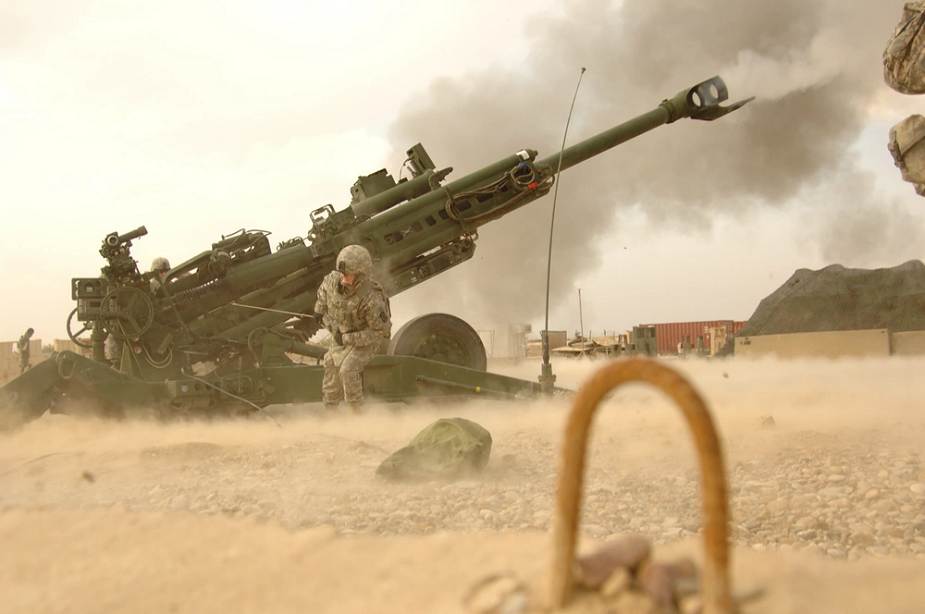
M777 155mm lightweight towed howitzer. (Picture source U.S. DoD)
The M777 is a 155mm towed howitzer manufactured by the Company BAE Systems to provide direct, reinforcing, and general artillery fire support to maneuver forces. The M777 is a 155 mm towed Howitzer that was jointly developed by the Army and Marine Corps to replace the M198 Howitzer.
The latest variant, the M777A2 is equipped with a Digital Fire Control System (DFCS) that includes an inertial navigation unit with Global Positioning System backup, allowing it to self-locate. The DFCS also includes a mission computer, displays and digital communications. Software upgrades to the system have incorporated the Enhanced Portable Inductive Artillery Fuze Setter (EPIAFS), giving the M777A2 the capability to program and fire the 155 mm Excalibur and Precision Guidance Kit precision munitions.
The M777A2 lightweight 155mmm towed howitzer uses a 155 mm/39 caliber ordnance using the same barrel as the US Army M109A6 self-propelled howitzer. It can be elevated to 71º and depressed to -3º. with traverse left and right of 23°. It has a maximum firing of 24 km with standard projectiles and 40 km using Excalibur M982/M982A1 GPS-guided

AN/TPQ-36 artillery radar
The AN/TPQ-36 is a mobile radar system developed by Hughes Aircraft Company and manufactured by Northrop Grumman and ThalesRaytheonSystems. The AN/TPQ-36 is a highly mobile short-range radar that can locate mortars, artillery and rockets within the accuracy of that weapons system. The AN/TPQ-36 was originally developed in the 70s and fielded in the early 80s.
The AN/TPQ-36 artillery radar is able to track aerial targets at 90° in azimuth. The radar is capable of tracking enemy mortar, artillery, or rocket fire as needed. The effective tracking range of the radar is just under 24 km.
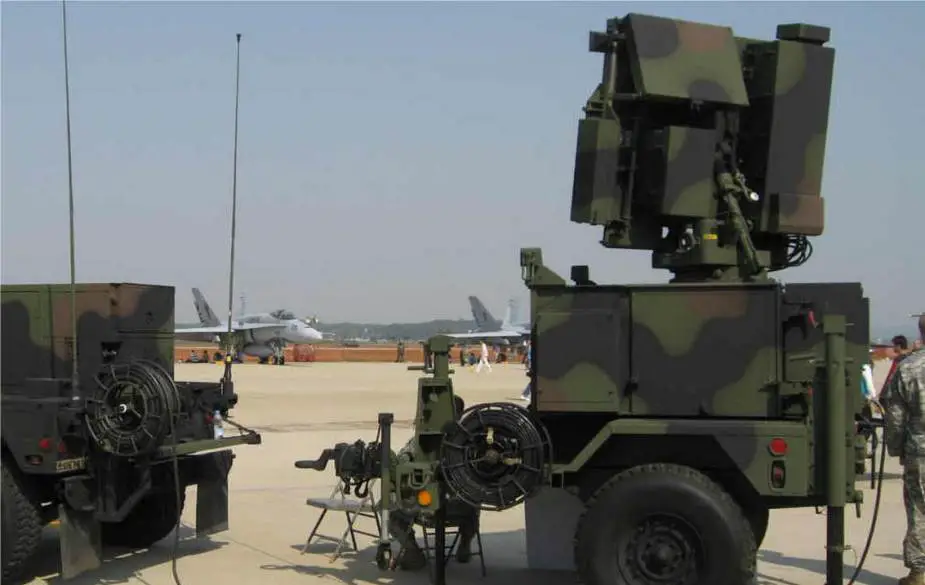
AN-MPQ-64 Sentinel artillery radar
The AN/MPQ-64 Sentinel provides persistent air surveillance and fire control quality data through command and control systems to defeat Unmanned Aerial Systems (UAS), cruise missiles and fixed- and rotary-wing aircraft threats.
The system features an X-Band, 360-degree phased array air defense radar with a 75-km instrumented range. It is equipped with Electronic Counter-Counter-Measure capabilities, a Mode 5 Identification Friend or Foe subsystem for positive identification of friendly aircraft, and Non-Cooperative Target Recognition capabilities to identify threat aircraft. Sentinel is trailer-mounted, pulled by either a High Mobility Multipurpose Wheeled Vehicle or an M1082 Family of Medium Tactical Vehicles truck. The system generator with a command and control interface is mounted on the vehicle.
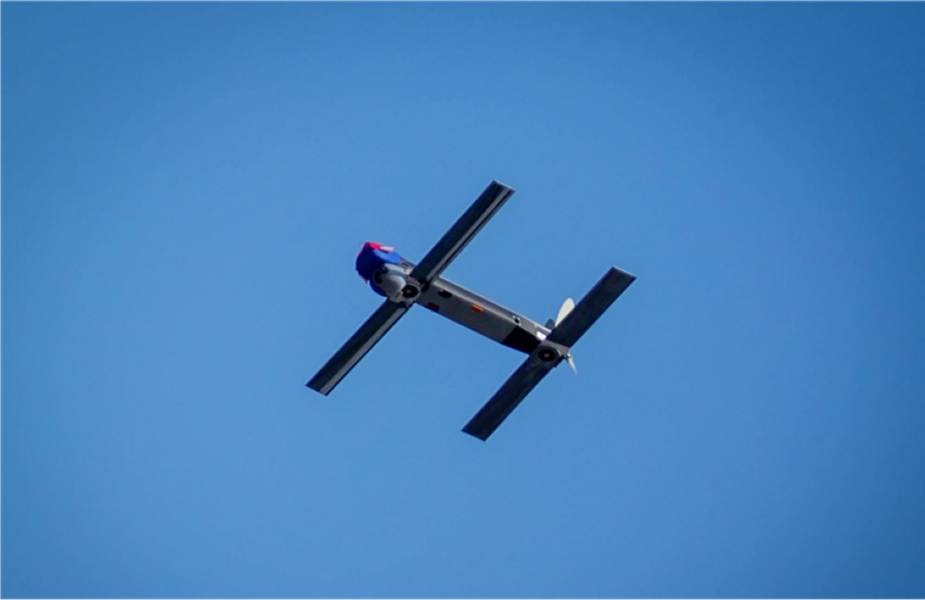
Switchblade 300 loitering munition.
The Switchblade is a miniature loitering munition or suicide drone designed by the American company AeroVironment. Small enough to fit in a backpack, the Switchblade launches from a tube, fly to the target area and crashes into its target while detonating its explosive warhead. The name switchblade comes from the way the spring-loaded wings are folded up inside a tube and flip out once released.
AeroVironment. has developed two types of loitering munition including the Switchblade 300 and the Switchblade 600. The Switchblade 300 is designed as an expendable UAV to increase precision firepower for platoon-sized infantry units. It is 610 mm long and weighs 2.7 kg including the carrying case and launcher, making it small and light enough for one soldier to carry.
The larger Switchblade 600 loitering munition weighs 23 kg, is man-portable, and can be set up in 10 minutes. It is designed to fly out to 40 km in 20 minutes, then loiter for another 20 minutes (giving it an 80 km total range). It attacks at a 185 km/h dash speed, carrying an ATGM warhead based on the FGM-148 Javelin, designed to neutralize armored vehicles.
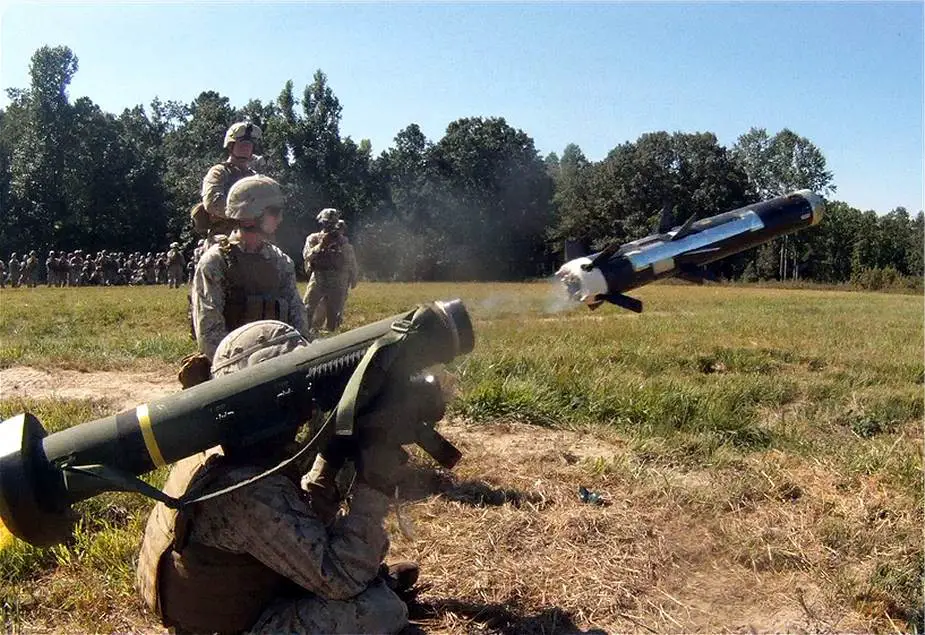
Javelin anti-tank guide missile (Picture source U.S. DoD)
The Javelin Close Combat Missile System – Medium (CCMS-M) is a man-portable, medium-range tactical missile system that provides the U.S. Army and Marine Corps with precision direct-fire effects to defeat main battle tanks and other armored vehicles as well as personnel and equipment in fortifications or in the open. Javelin is highly effective against a variety of targets at extended ranges during day or night operations, and under battlefield obscurants, adverse weather, and multiple countermeasure conditions.
The Javelin missile’s tandem warhead is a high-explosive antitank round. This round utilizes an explosive-shaped charge to create a jet of superplasticity deformed metal formed from trumpet-shaped metallic liners. The result is a high-velocity jet that can penetrate armor equivalent to 600 to 800 mm RHA (Rolled Homogeneous Armor). The Javelin missile has a maximum range of 2,500 m using a fire-and-forget missile with lock-on before launch and automatic self-guidance. The missile has an effective firing range of 4,000 m for the lightweight LCU. It has a maximum firing of 4,750 m when the missile is fired from a vehicle weapon station.
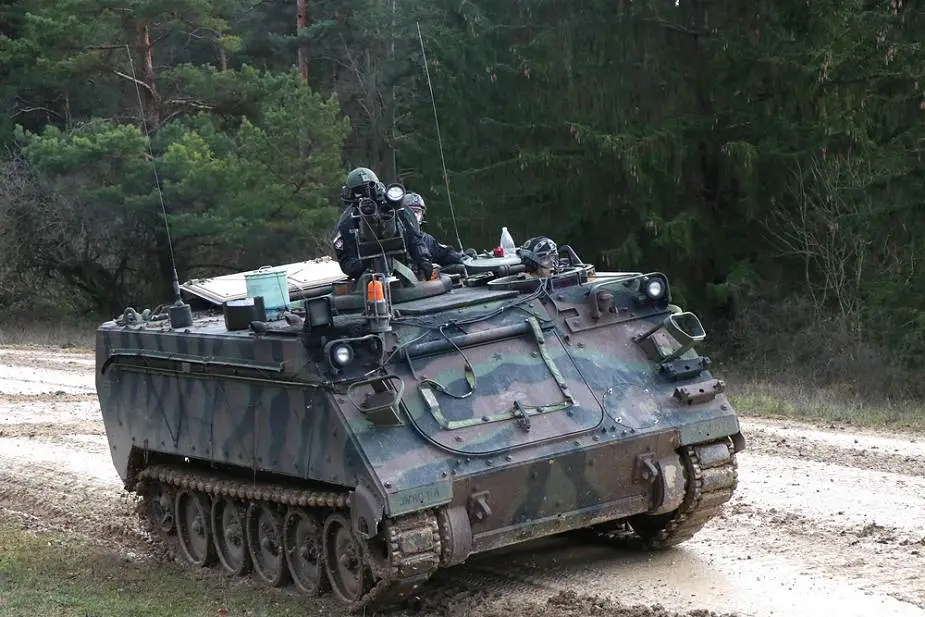
M113A3 tracked armored personnel carrier vehicle (Picture source U.S. DoD)
The M113 is a family of tracked armored vehicles that was developed and produced by the Food Machinery and Chemical Corporation (FMC). The latest variant, the M113A3 is already in service with the United States and will be replaced in the future by the AMPV. The all-welded aluminum armor hull of the M113 protects the crew from small arms fire and shell splinters.
The design of the M113 standard variant consists of two main parts with the driver and engine at the front of the hull and troops or cargo compartment at the rear. The infantrymen enter and leave the M113 via a power-operated ramp in the rear of the hull that opens downwards and has a door in the left side.
The M113 is powered by a Detroit 6V53 V6 two-stroke diesel engine coupled to an Allison TX-100-1 three-speed automatic transmission. It can run at a maximum road speed of 60 km/h with a maximum cruising range of 480km. the M113 A3 features new improvements to enhance the survivability of the vehicle on the modern battlefield. The improvements include a yoke for steering instead of laterals, a brake pedal, a more powerful engine (the turbocharged 6V-53T Detroit Diesel), and internal spall liners for improved protection. Armored fuel tanks were added externally on both sides of the rear ramp, freeing up 0.45 cubic meters of internal space.

HUMVEE M1114 4x4 tactical armored vehicle (Picture source U.S.DoD)
The High Mobility Multipurpose Wheeled Vehicle (Humvee is a series of light tactical vehicles designed and manufactured by the American company AM General. The latest variants have been upgraded and fitted with a new armor package to increase protection against the firing of small arms and IEDs (Improvised Explosive Devices).
The vehicle has a length of 4.57, a height of 1.82 m, and a width of 2.13 m. The chassis is a steel frame with boxed frame rails and five cross members constructed from high-grade alloy steel. The body is made of aluminum, which reduces its weight and provides high resistance to corrosion. It has a crew of two including a driver and commander and can carry up to three soldiers, The rear part of the vehicle is used as a cargo area. The gross vehicle weight rating (GVWR) of the standard HUMVEE is 3,500 kg, with a curb weight of 2,350 kg with a maximum payload of 1,150 kg,
The M1114 HMMWV is an armored version of the Humvee family vehicle. The concept of the vehicle began in 1995 after a series of ballistic tests. The M1114 was designed and manufactured by the American Company AM General. The M1114 HMMWV was designed to conduct reconnaissance and security operations as its primary function. It provides ballistic protection against the firing of small arms 7.62mm calibers and the blast of mine equivalent of 5.5 kg of TNT explosion.

M-17 Russian-made transport helicopter. (Picture source U.S. DoD)
The Mi-17 is a modernized version of the Mi-8 Soviet-designed Russian military helicopter family. Mi-17 medium twin-turbine multipurpose helicopter is a deep modernization of the well-reputed Mi-8 rotorcraft. Its versatility and high-performance characteristics made it the most popular helicopter in the world. Over 11,000 Mi-8/Mi-17 helicopters have been produced so far. They are in service in 80 countries now. At present, Kazan Helicopters JSC serially produces three main modifications of Mi-8 rotorcraft, the Mi-172 is a passenger version. It is intended for the transportation of 28 passengers.

U.S. soldier using an M18A1 Claymore mine. (Picture source U.S. DoD)
The M18A1 Claymore is a directional anti-personnel mine developed for the United States Armed Forces. Its inventor, Norman MacLeod, named the mine after a large medieval Scottish sword. Unlike a conventional land mine, the Claymore is command-detonated and directional, meaning it is fired by remote control and shoots a pattern of metal balls into the kill zone like a shotgun. The Claymore can also be victim-activated by booby-trapping it with a tripwire firing system for use in area denial operations.
The Claymore fires steel balls out to about 100 m (110 yd) within a 60° arc in front of the device. It is used primarily in ambushes and as an anti-infiltration device against enemy infantry. It is also used against unarmored vehicles.



















